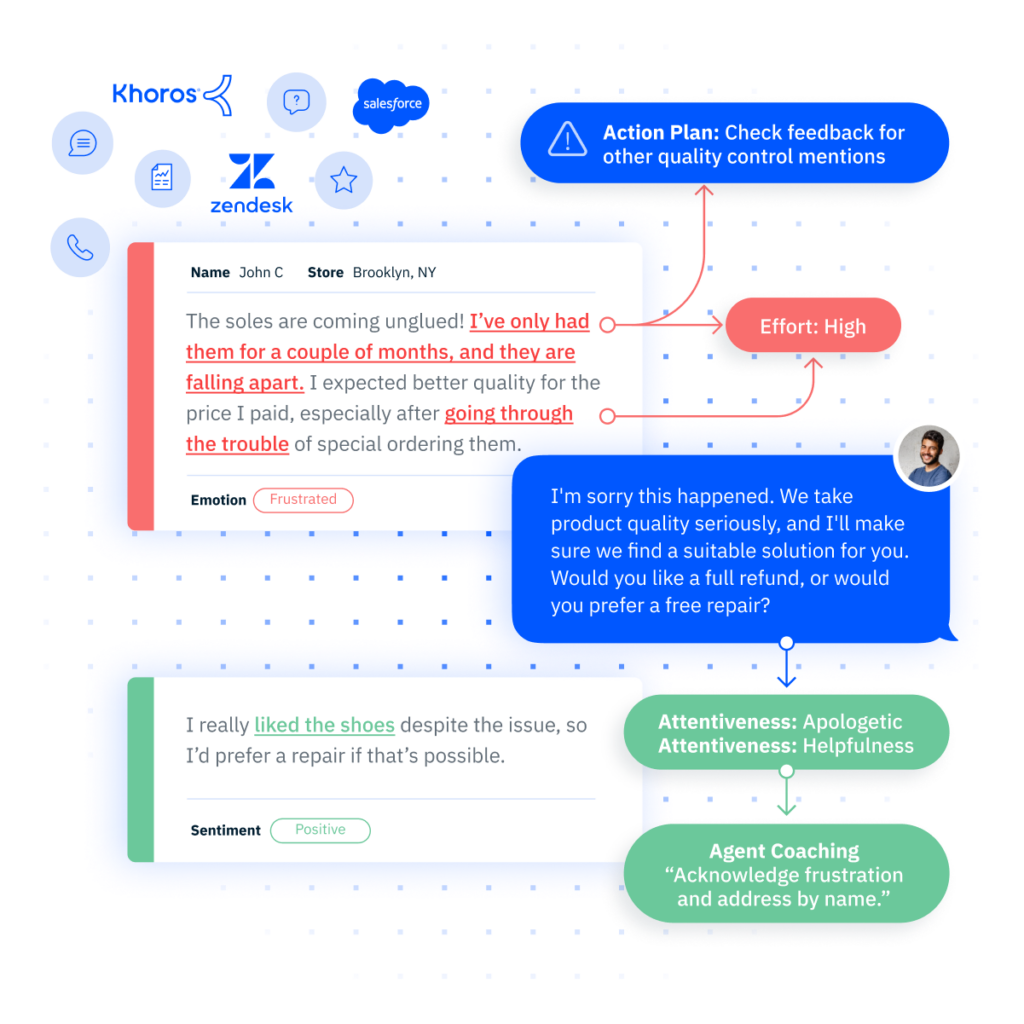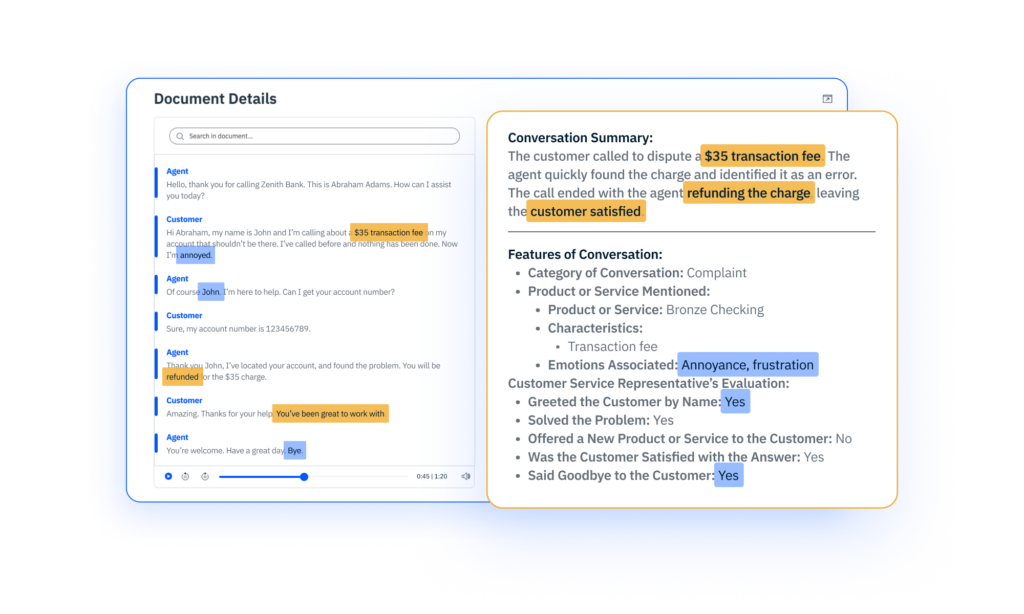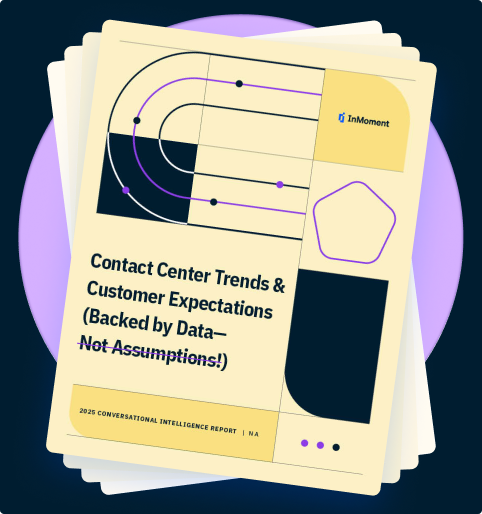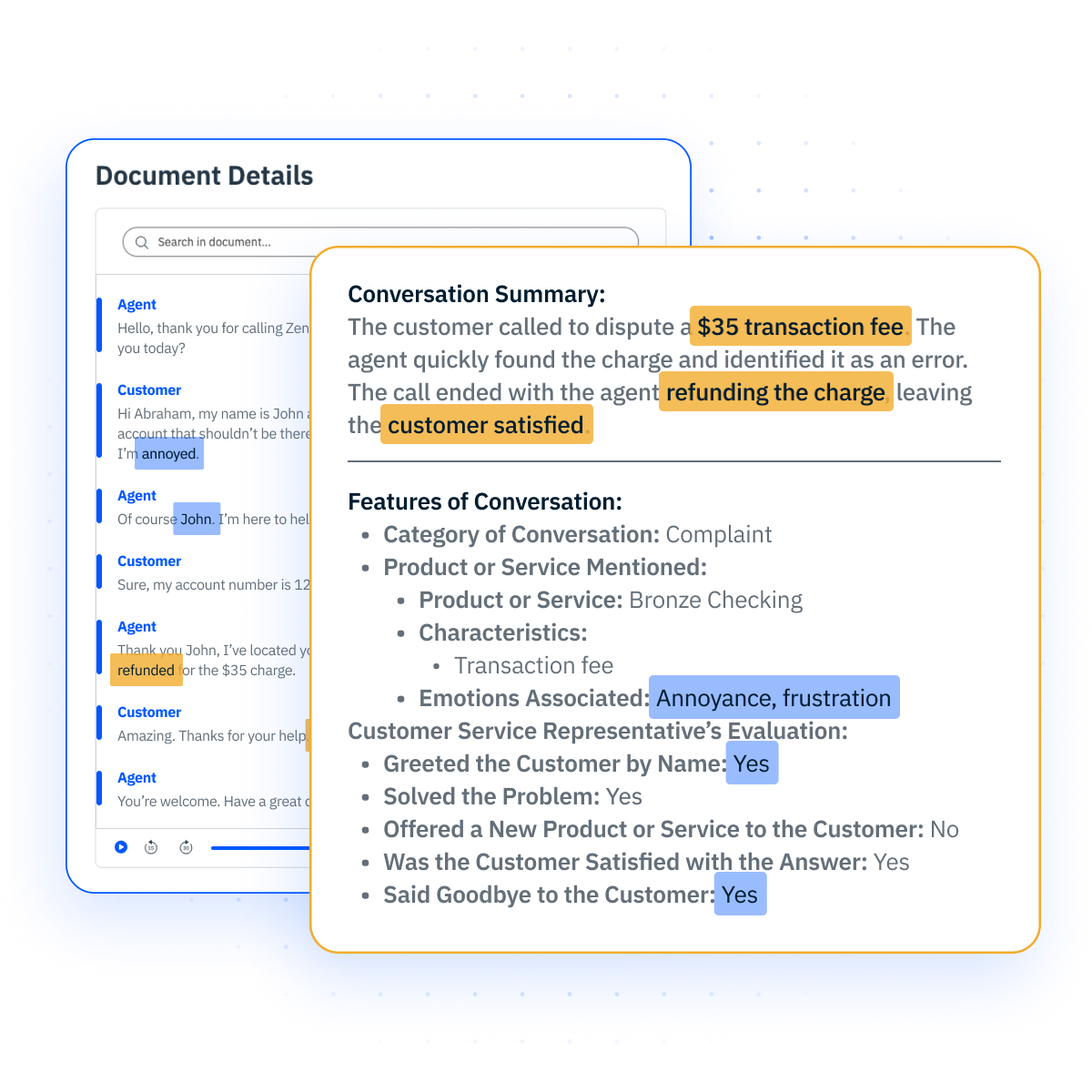What Is Conversational Intelligence? The Uses, Benefits, and Features
Discover what conversational intelligence is, its key benefits for businesses, and the must-have features to improve customer experience and team performance.
In today’s data-rich, insight-starved enterprise environment, conversations are one of the most underleveraged sources of customer intelligence. But with modern technology, businesses can now tap into that resource at scale. Conversational intelligence (CI) enables organizations to extract meaningful insights from natural language interactions, transforming recorded conversations into actionable data that drives smarter decisions, faster responses, and better outcomes.
At InMoment, we believe Conversational Intelligence is a crucial component of an integrated CX strategy. By pairing CI with surveys, reputation management, and real-time VoC programs, brands gain a 360-degree understanding of their customers and employees.
Let’s take a deep dive into what conversational intelligence is, how it works, and why it’s become a strategic necessity for enterprise organizations.
What is Conversational Intelligence?
Conversational intelligence is the technology that enables companies to capture, process, and analyze voice and text-based customer interactions across channels. It relies on a blend of artificial intelligence (AI), machine learning (ML), and natural language processing (NLP) to surface key trends, themes, sentiments, and intents from real customer conversations at scale.
Unlike traditional analytics, conversational intelligence focuses on the full context of a conversation, extracting not just what’s said, but how and why. It turns everyday conversations—support calls, emails, chat logs—into structured data to optimize service, reduce churn, and inform product development.
Conversational Intelligence vs. Conversational AI
It’s easy to confuse conversational intelligence with conversational AI, but they serve distinct functions.
- Conversational Intelligence analyzes human-to-human interactions (like support calls or sales meetings) to extract insights.
- Conversational AI powers automated interactions through chatbots or voice assistants using NLP and generative models.
Think of conversational intelligence as the analysis layer—listening, learning, and turning conversation data into insights. Meanwhile, conversational AI is the execution layer, which simulates conversations through automation.
Why is Conversational Intelligence Important?
Conversational intelligence matters because businesses are drowning in data but starved for insight. Every customer call, email, or message contains unfiltered feedback—if only brands could listen at scale.
With CI, companies can:
- Understand pain points as they arise
- Monitor agent performance and compliance
- Surface product issues before they go viral
- Identify the “why” behind churn or low satisfaction
It’s a powerful, often untapped lever for experience improvement.

How Does Conversational Intelligence Work?
Let’s break down how conversational intelligence works, step-by-step.
Data Collection
CI platforms collect data from a range of sources—voice calls, live chats, emails, SMS messages, social media interactions, and more. Integrations with CRMs, call center systems, and ticketing tools enable full-funnel visibility.
Preprocessing
Once data is collected, it must be cleaned and structured. This includes removing background noise from audio, redacting sensitive information, and formatting inputs for consistent analysis.
Audio Transcription
Voice interactions are transcribed to text using automatic speech recognition (ASR). Accuracy here is critical, as it directly impacts the quality of downstream analysis.
Understanding Language
Natural language processing and machine learning models interpret meaning, detect sentiment, and identify entities, keywords, and intents. This enables platforms to recognize frustration, praise, or common complaints, contextually.
Analytics and Reporting
The final layer transforms data into dashboards, trend reports, and alerts. Users can filter by topic, sentiment, region, team, or product line to find what matters most. The goal: give teams fast, actionable insights.
What’s the Difference Between Conversation Intelligence vs Call Tracking Software?
While both tools deal with calls, call tracking software primarily monitors call sources and routing, focusing on attribution and marketing ROI. Conversational intelligence, by contrast, focuses on the content of conversations, surfacing strategic insights from the dialogue itself.
Benefits of Conversational Intelligence
Conversational intelligence offers transformative benefits across CX, marketing, sales, and operations. Here’s how:
1. Optimizing Call Center Performance
By analyzing 100% of customer interactions, CI reveals agent performance trends, identifies call drivers, and uncovers friction in real time. Supervisors can pinpoint top performers, flag training gaps, and reduce average handle time (AHT) with laser precision.
2. Agent Nurturing and Training
CI enables continuous learning by highlighting standout calls and areas for improvement. Teams can create coaching playlists or QA workflows using real examples.
3. Extracting Valuable Insights
Executives and product teams gain a window into the voice of the customer (VoC), capturing unfiltered feedback that fuels innovation.

4. Personalized Customer Interactions
By understanding previous conversations and sentiment, agents can tailor interactions based on the customer’s tone, history, and intent, leading to better outcomes and stronger loyalty.
5. Efficient Resource Allocation
With clear data on call drivers and intents, teams can staff according to demand, automate low-value queries, and route issues to the right departments faster, reducing costs and boosting satisfaction.
6. Identifying Emerging Customer Trends
Analyzing thousands of conversations helps organizations spot shifts in preferences, product issues, or competitive mentions before they escalate, enabling proactive change.
7. Closing the Feedback Loop in Real Time
CI tools flag urgent issues and surface themes instantly, empowering teams to act on insights in the moment. Whether it’s resolving a product bug or recovering a frustrated customer, action happens faster.
Where should I put this internal link, peeps? https://inmoment.com/blog/conversational-intelligence-insights/
Conversation Intelligence Examples by Industry
- Healthcare: Improve patient experience and understand concerns in scheduling, billing, or bedside manner
- E-Commerce: Optimize sales and support workflows; uncover cart abandonment trends
- Financial Services: Monitor compliance, detect fraud signals, and enhance service clarity
- Retail: Pinpoint feedback around store layout, product availability, or service gaps
- Hotels & Lodging: Understand friction in booking and check-in processes
- Entertainment & Recreation: Enhance guest experience through feedback on events and services
- Restaurants / Food Services: Monitor order issues, menu feedback, and staff performance
- Insurance: Improve claims processes and policy explanation clarity
- Health & Wellness: Identify coaching or service quality concerns
- Automotive: Uncover dealership-level feedback and service concerns
- Airlines: Track delays, cancellations, and gate agent interactions
Features to Look For in a Conversational Intelligence Platform
The right platform makes all the difference. Look for tools that not only collect and process data but make it accessible and actionable across teams. Key features include:
- Omnichannel Data Capture: Collects conversations from calls, email, SMS, chat, and social
- Real-Time Alerts: Flags urgent issues as they happen
- Custom Dashboards and Reporting: Tailors views by department, region, or campaign
- Sentiment and Intent Analysis: Goes beyond keywords to detect emotions and purpose
- Integrations with CRM, CX, and Support Tools: Syncs data across platforms for unified insights
- AI-Powered Coaching Tools: Supports team training with real interaction examples
Unlock Actionable Insights from Every Conversation with InMoment
Conversational intelligence is more than speech-to-text. It’s how leading brands transform customer conversations into strategic advantage. By tapping into CI, businesses reduce churn, optimize support, and understand their customers on a deeper level.
InMoment’s CI tools are built to scale with you. Paired with our Experience Improvement (XI) platform, reputation management tools, and survey programs, we help you close the loop and lead in customer experience.
Ready to hear what your customers are really saying? Request a demo and see what InMoment can do.





